[CB2L/BK7231N] Large Ledlumen plafond 251090511 CLP-12 36W 4052lm
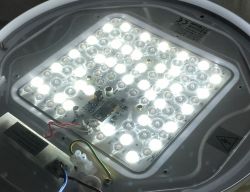
I'm going to present here the brightest WiFi ceiling plafond I've reviewed so far, available for purchase online for a whole 160 PLN (abour 40$). I'm going to try to change its firmware, which will be quite difficult, as it uses the WiFi/BT CB2L module, whose UART interface is located on its bottom and is usually obscured by the mother board. This module will have to be desoldered.
I will also take the opportunity to show the inside of this plafond and give its configuration for OpenBeken .
First - some excerpts from the product description from the seller:
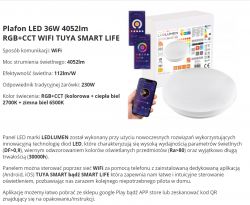
Parameters:
| Type | [/td]CLP |
| Luminous flux power | 4052lm | [/tr]
| [td] Luminous efficacy | 112lm/W | [/td]
| [td] Requivalent to a traditional incandescent bulb | [/td]120W |
| Phase shift factor | DF>0,9 |
| Protection level | IP20 |
| Distribution angle | 140° |
| Lighting color | RGB+CCT (color + warm white 2700K + cool white 6500K |
| [td] Color Rendering Index (CRI) | Ra>80 |
| Communication method | WiFi |
| [td] Wifi network | 2,4 Ghz |
| Dimming capability | [td] YES |
| Voltage | 220-.240V AC |
| Network frequency | 50-60 Hz |
| Power | 36W |
| Life span | 30000h |
| Number of duty cycles | 30000 |
| Dimensions | 350x55mm |
| Energy performance label | E |
| Power consumption for 1000 hrs. | 36kWh |
| Certifications | CE, RoHS |
| Article name | CLP-.12 36W LED IP20 WIFI RGB+CCT |
| [td] Brand | LEDLUMEN |
| Catalogue index | [td] 251090511 |
The contents of the kit
For the entire 160PLN, we get the plafond, mounting studs and instructions.
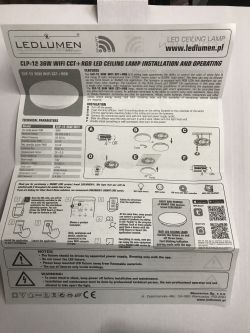

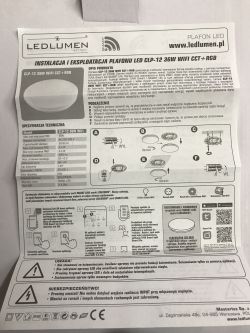
By the packaging alone, you can infer that this is not an ESP8266-based product - the packaging says "WiFi + BLE"....
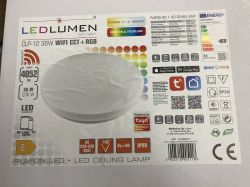
The lid just needs to be gently twisted to see the inside....
The interior of the plafond There are indeed a bit more LEDs, Or at least those in shades of white:
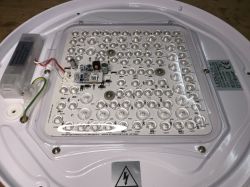 .
. 
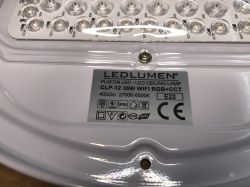
The LED power supply itself is separate (230VDC 42mA, 36W, PF>0.9), and their WiFi controller separately:
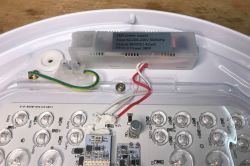
The WiFI module inside is CB2L:
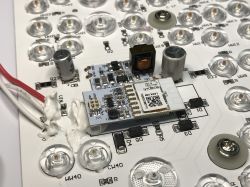
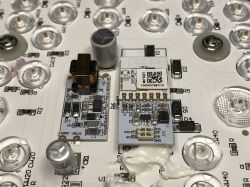
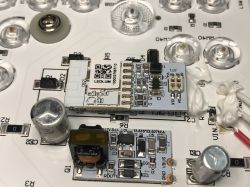
The board with CB2L has only four pins, power, SDA and SCL, suggesting the presence of an I2C or I2C-like protocol LED driver.
The board with CB2L also has a step-down inverter, probably generating 3.3V for the WiFi module.
Just next to it is the board with BP2522:
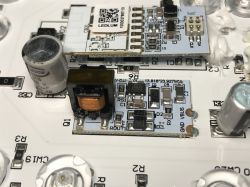
Probably some simple power supply?

This is probably for the WiFi module.
Under the WiFi module we can already see what controls the LEDs:

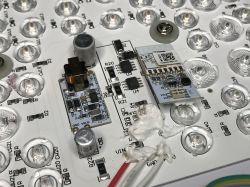 Two pieces of BP5758! The multimeter indicates that their SDA and SCL pins are connected together, but I don't think they have different addresses, their protocol probably doesn't even support that. Just used two because of the large number of white LEDs - warm and cold.
Two pieces of BP5758! The multimeter indicates that their SDA and SCL pins are connected together, but I don't think they have different addresses, their protocol probably doesn't even support that. Just used two because of the large number of white LEDs - warm and cold.
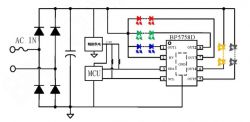 How does the lamp see the Tuya application? Just a quick sample - Tuya has already been discussed.
How does the lamp see the Tuya application? Just a quick sample - Tuya has already been discussed. 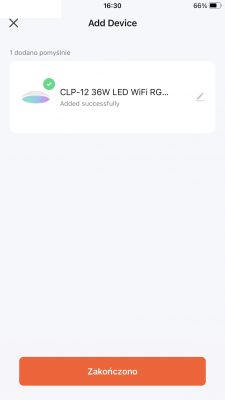 CLP-12 36W LED WiFi RGB. Is this the second model name?
CLP-12 36W LED WiFi RGB. Is this the second model name?
Changing the firmware [/size] There is a small problem with changing the firmware. The UART port on the CB2L is on its "back", and this "back" touches the mother board. You have to desolder this module.

I used a risky method. I applied flux, added lead solder to each pad, and heated them together with a soldering iron tip.

Ready:

Programming, as usual only RX, TX, 3.3V and GND connected. I do the reset by cutting off the power.
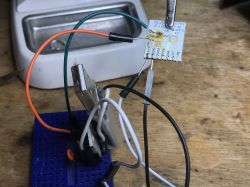
My flasher managed:
https://github.com/openshwprojects/BK7231GUIFlashTool
After the operation:
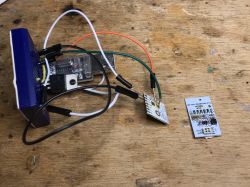
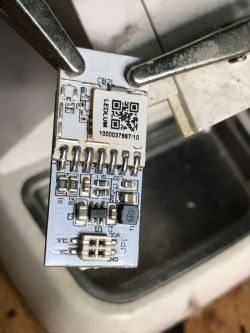 OpenBeken configuration/role pins -. BP5758 SDA is P8
OpenBeken configuration/role pins -. BP5758 SDA is P8
- BP5758 SCL is P7
- channel mapping (BP5758D_Map) is sequentially 1 2 0 3 4
That's all I needed, to get the firmware going.
Effects in practice. The white shades are indeed quite bright and take about 35W from the grid.. The RGB colors are dark, consuming a mere 3W, and I wouldn't count on the manufacturer using any efficient LEDs here either, and I wouldn't take the power measurement here as some measure of LED brightness level. On the other hand, I have no way of measuring the actual level of light emitted by this product.

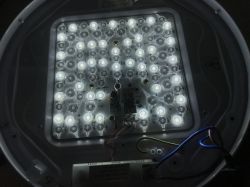
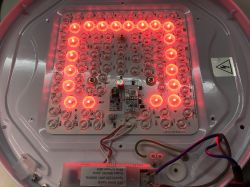
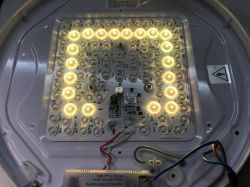
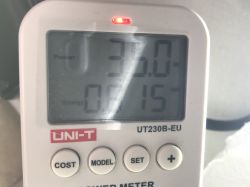




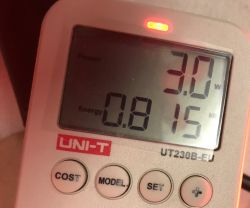
Summary
The phone was dropped off to me for programming by a forum reader, I uploaded the batch to him and the lamp went on to illuminate his room nicely and colorfully. This RGB is not very strong, but the mood can still introduce.
At the same time, for this lamp, I recommend preparing such a mechanism:
[Youtube] Tasmota Device Groups for OpenBeken - single light switch to control lights, dimmer, color
Then you will have full control over it and without having Home Assistant - no servers, everything by UDP.
As for the rest, the product indeed shines brightly, but only in white colors. RGB is poor. It's worth thinking twice about how much you want to light up a room, because you may find that such a toy shines more expensively than a few classic LEDs bought at a fraction of its price....
The programming itself was also quite difficult, you had to desolder the WiFi module because its pads were obscured, a situation like here:
[Youtube] SMD module desoldering and BK7231 firmware change in RGBCW LED light but after my intervention, thanks to the one-cable batch ripping, the other products in this series (with this firmware build) can already be programmed remotely via Cutter, so you are unlikely to be affected by soldering problems...[/td][/td][/td][/tr][/td]



Comments
I have a slightly different plafond. Is it possible to buy the LED array itself Of course without resistors, because I have a power supply that controls the current. [Read more]